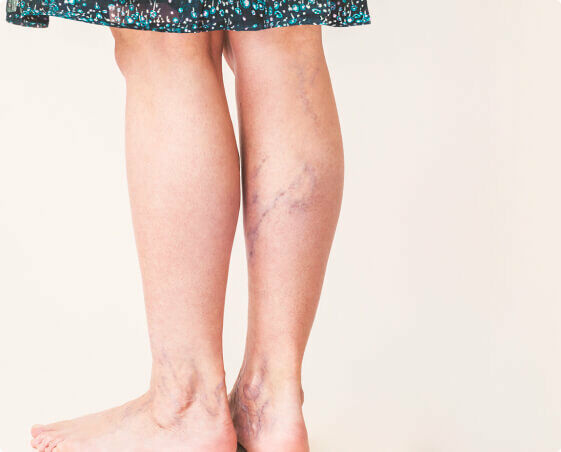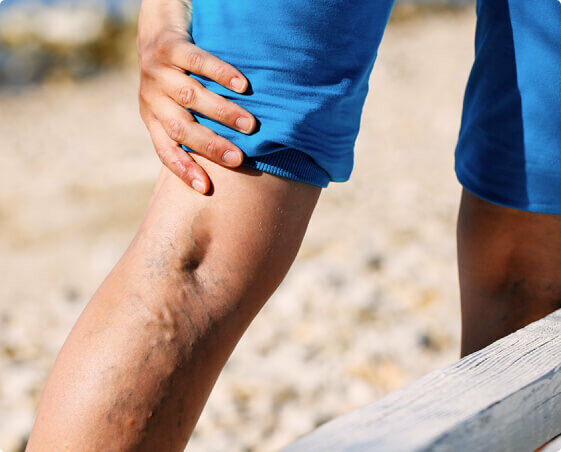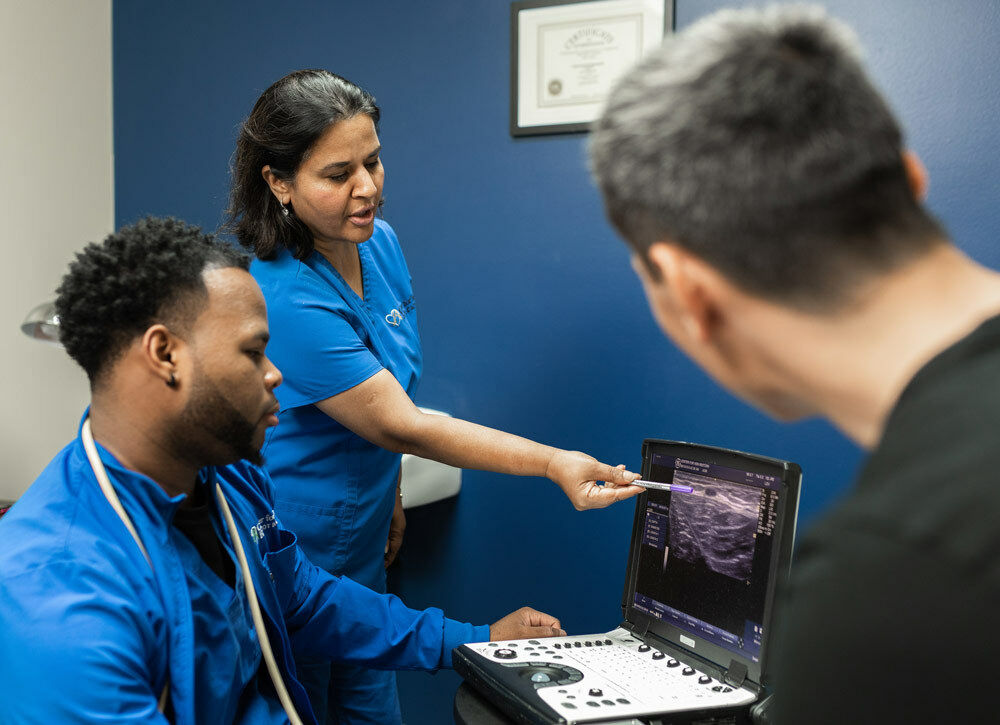What is Vein Disease?
Learn about the signs and symptoms of chronic venous insufficiency (also known as vein disease). Find out how common vein disease is (you’re not alone), and discover how our innovative treatment options can help you look and feel better. We will help you find a vein specialist near you.
What is venous disease?
Leg veins are made of connective tissue, smooth muscle cells, and elastic fibers that allow veins to contract and stretch as blood flows through them. Inside your leg veins, tiny valves keep blood flowing in one direction—upward (against gravity!) to your heart. Chronic venous insufficiency (CVI) damages these valves, causing blood to pool in the legs.
The increased pressure of the pooled blood leads to symptoms such as tired, achy legs, leg pain, swelling, itching, heaviness, varicose veins, and skin changes, including flaking and discoloration, leathery-looking skin, and open sores (ulcers).
Between 30-40 million people in the United States are affected by venous disease. According to the AHA journal "Circulation," approximately 23% of US adults have varicose veins, affecting affect 22 million women and 11 million men between the ages of 40 to 80 years.
Spider veins
Often resembling spider webs or thin tree branches, spider veins are small, dilated blood vessels near the skin’s surface. They can be red, purple, or blue in color, usually appearing on the legs, chest, or face, and are a sign of underlying venous reflux, just like varicose veins.
While mainly a cosmetic issue, spider veins can be irritating,causing itching, burning, or cramping.
The causes of spider veins are similar to that of varicose veins. Causes include genetics, aging, hormonal changes including pregnancy, standing or sitting too long, weight gain, as well as exposure to the sun without sunscreen.

Varicose veins
Varicose veins are visibly swollen veins that tend to develop in the calf and groin areas of the leg. Pooled blood expands the vein, resulting in a twisted or knotted appearance. Because of the increased pressure in the vein, varicose veins can cause serious aching or throbbing pain.
Varicose veins are caused by many factors, including genetics, being female, aging, being overweight, and standing or sitting for long periods. People with occupations that involve prolonged periods of standing–such as nurses, hair stylists, teachers, factory workers, and men and women in the service industry–are more likely to suffer from varicose veins than anyone else.
Unlike spider veins, untreated varicose veins can lead to more serious health problems, including sores that don’t heal (ulcers), bleeding, and deep vein thrombosis (DVT).

How is vein disease treated?
The board-certified vein specialists at Center for Vein Restoration (CVR) treat the symptoms of venous disease using proven, office-based, minimally invasive treatment options that take an hour or less to complete and allow patients to return to normal activity immediately, with few restrictions.
With 110+ CVR vein centers nationwide, there’s sure to be a vein clinic near you.
Symptoms of vein disease

Varicose Veins
Varicose veins are visibly swollen veins that tend to develop in the calf and groin areas of the leg. Pooled blood expands the vein, resulting in a twisted or knotted appearance. Because of the increased pressure in the vein, varicose veins can cause serious aching or throbbing pain, especially after sitting or standing for an extended period of time.
Spider Veins
Spider veins are typically red or blue, small, and found close to the surface of the skin. They get their name because they look like a spider's web, and most patients experience discomfort, swelling, rash, itching, or achy, restless legs.
What happens if I don’t treat my vein disease?
Vein disease often starts as minor itching, swelling, and varicose veins. But without treatment by a qualified vein specialist, these symptoms can quickly become debilitating pain, aching, skin changes, ulcers, and DVT. The sooner you have your varicose veins evaluated and treated, the sooner you’ll return to enjoying your normal, beautiful, pain-free life.
Don’t delay! Find a Center for Vein Restoration vein clinic near you and schedule a consultation today!
